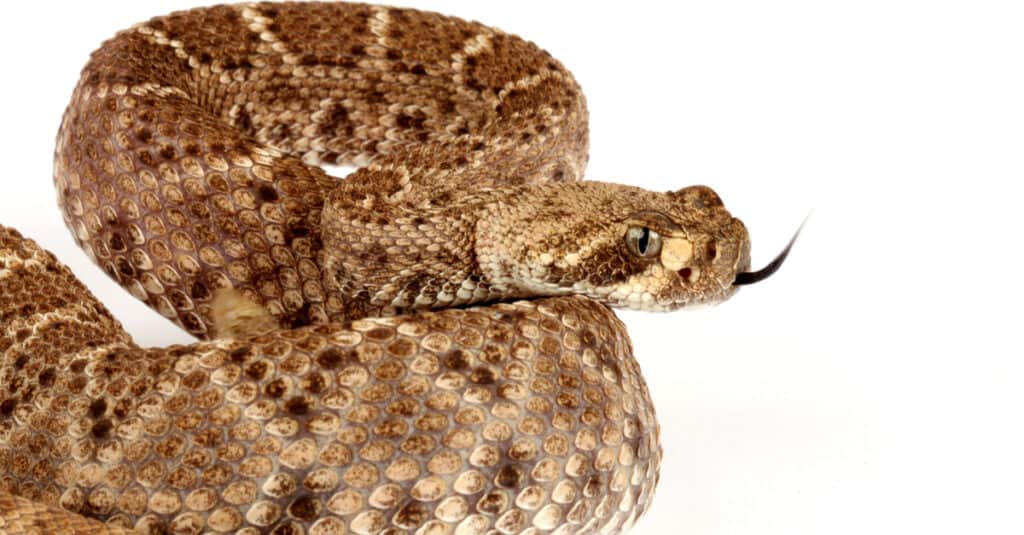A video on YouTube compares two venomous snakes to give viewers an inside look at just how dangerous Western Diamondbacks and Mohave Rattlesnakes truly are to anyone they meet. Let’s take a quick look at each slithering serpent before watching them dual for most venomous in the informative and entertaining video below!
Click to Watch the Video Below
The western diamondback rattlesnake (Crotalus atrox) has a triangular-shaped head and a large body. From the eyes to the jaws, there are two black diagonal lines on either side of its face. Along its back, it features black diamond-shaped markings. A little above the rattles on the tail are stripes of black and white.
Diamondbacks frequently coil up in the shadows of low-growing bushes, mounds of natural or man-made rubbish, or boulders during the sweltering daylight hours. They will also make use of other animals’ subterranean tunnels. They hide away in caverns or other such locations throughout the winter to hibernate.

Western diamondback rattlesnakes have a number of distinguishing features.
©Audrey Snider-Bell/Shutterstock.com
The length of this snake varies from three to five feet, with some individuals growing as long as seven feet. The bulk of envenoming deaths in northern Mexico and the bulk of snakebites in some western parts of the US are likely related to this snake.
It is easy to confuse the Mojave rattlesnake with the western Diamondback rattlesnake. Their backs both feature distinct, light-edged diamonds running down the center of them. While the western diamondback snake’s diamond pattern lasts all the way to the tail, the Mojave rattlesnake’s decoration fades in the last third. Rings of white and dark contrast on the Mojave’s tail. Whereas the Diamondbacks have thick black rings, the white rings are significantly broader than the black bands.
Although some Mojave rattlesnakes have a greenish hue, others can also be brownish or yellow. The Mojave rattlesnake is one of the most harmful and venomous snakes in the United States because of its extremely strong venom, which is thought to be 10 times more lethal than that of other North American rattlesnakes. The Mojave toxin in their venom acts as a neurotoxin.

Mojave rattlesnakes have a green hue.
©iStock.com/Shoemcfly
Interestingly, a Mojave Rattlesnake bite typically doesn’t hurt as much as other snake bites do. This type of rattlesnake is a medium-sized rattlesnake since adult snakes may grow to a length of two to four feet. Although reports of the Mojave rattlesnake’s violent behavior toward people are sometimes overstated, the snake, like other reptiles, will protect itself if bothered or tormented.
To learn more about both the Mojave Rattlesnake and the Western Diamondback, check out the video below. It’s packed with incredible footage of the serpents and has plenty of fun facts and interesting information.
The photo featured at the top of this post is © Rusty Dodson/Shutterstock.com
Discover the "Monster" Snake 5X Bigger than an Anaconda
Every day A-Z Animals sends out some of the most incredible facts in the world from our free newsletter. Want to discover the 10 most beautiful snakes in the world, a "snake island" where you're never more than 3 feet from danger, or a "monster" snake 5X larger than an anaconda? Then sign up right now and you'll start receiving our daily newsletter absolutely free.
Thank you for reading! Have some feedback for us? Contact the AZ Animals editorial team.






